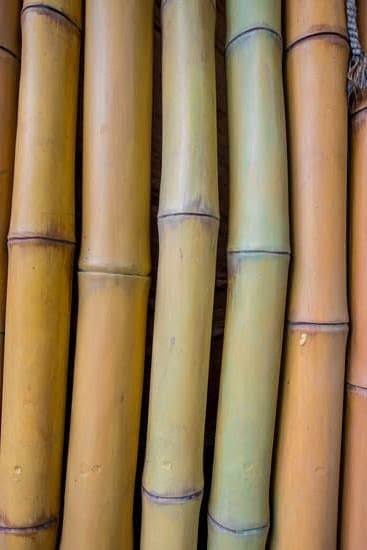Feng Shui for a house facing east is a practice deeply rooted in ancient Chinese philosophy that focuses on harmonizing individuals with their surroundings. This article will explore the principles of Feng Shui and how they can be applied to optimize the energy flow in an east-facing house.
In Feng Shui, the orientation of a house plays a crucial role in determining its overall energy balance and its impact on the occupants’ well-being. A house facing east is believed to receive abundant sunlight and positive Qi, which can promote vitality, growth, and new beginnings. Understanding how to harness this beneficial energy is key to creating a harmonious living space.
By incorporating key elements such as color schemes, furniture arrangement, and decor choices, homeowners can enhance the flow of Qi throughout their east-facing house. This article will provide a room-by-room guide on how to implement Feng Shui principles effectively, ensuring that every area supports prosperity, health, and happiness in alignment with traditional Chinese beliefs.
Importance of House Orientation in Feng Shui Practice
Feng Shui practitioners believe that the orientation of a house plays a crucial role in determining the flow of energy, or chi, within the space. The direction in which a house faces is believed to have a significant impact on various aspects of life, such as health, relationships, and prosperity. For those with houses facing east, understanding the principles of feng shui for house facing east can help optimize the energy flow and create a harmonious living environment.
In Feng Shui, an east-facing house is associated with new beginnings, growth, and vitality. The symbolism behind this orientation is deeply rooted in traditional Chinese beliefs about the cycle of life and the rising sun representing hope and opportunity. By aligning your living space with these principles, you can invite positive energy into your home and enhance various aspects of your life.
To maximize the benefits of having a house facing east according to Feng Shui principles, it is essential to pay attention to key elements such as colors, shapes, and materials used in interior design. Incorporating elements like wood and green hues can further promote growth and balance in an east-facing house. Additionally, ensuring that your furniture arrangement allows for smooth energy flow throughout the space can contribute to a sense of well-being and harmony.
| Key Elements | Benefits |
|---|---|
| Colors (green) | Promote growth |
| Materials (wood) | Enhance balance |
Benefits of Having a House Facing East According to Feng Shui
According to Feng Shui principles, the orientation of your house plays a significant role in determining the flow of energy or “Chi” within your living space. A house facing east is believed to bring about a multitude of benefits that can positively impact various aspects of your life. In Feng Shui, the east symbolizes new beginnings, growth, and vitality, making it an ideal direction for a house to face.
One of the key advantages of having a house facing east is the abundance of natural light that it receives throughout the day. This not only creates a bright and uplifting atmosphere but also allows for better air circulation, which is essential for maintaining a healthy and harmonious living environment. In Feng Shui philosophy, natural light is believed to uplift the energy in a space and promote positive vibrations that enhance overall well-being.
Moreover, a house facing east is thought to be conducive to personal growth and development. The morning sun rising in the east is considered auspicious in Feng Shui, symbolizing new opportunities and beginnings.
This direction is associated with motivation, inspiration, and creativity, making it an ideal choice for individuals who are looking to enhance their productivity or pursue new ventures. By harnessing the energy of an east-facing house through intentional design and decor choices, you can create a space that supports your goals and aspirations effectively.
| Advantages | Benefits |
|---|---|
| Abundance of Natural Light | Bright and uplifting atmosphere, better air circulation |
| Conducive to Personal Growth | Motivation, inspiration, creativity for pursuing goals |
Key Elements to Consider in Optimizing the Energy Flow for an East-Facing House
When it comes to optimizing the energy flow for an east-facing house in Feng Shui, there are several key elements to consider. The orientation of a house plays a crucial role in determining the quality of energy it receives, which can ultimately impact the well-being and harmony of its occupants. In Feng Shui principles, the east is associated with new beginnings, renewal, and growth, making it an auspicious direction for a home.
Harnessing the Power of the Rising Sun
One of the main advantages of having a house facing east is the opportunity to harness the energy of the rising sun. In Feng Shui, sunlight symbolizes vitality, nourishment, and positive energy. To take full advantage of this beneficial energy flow, it is essential to ensure that windows are unobstructed to allow natural light to fill the interior spaces of the house.
Balancing Yin and Yang Energies
In Feng Shui philosophy, achieving balance between yin (passive) and yang (active) energies is essential for creating harmonious living spaces. An east-facing house tends to receive more yang energy due to the exposure to sunlight and external influences. To optimize energy flow, it is crucial to incorporate elements that promote yin qualities such as tranquility, relaxation, and introspection in certain areas of the house.
Embracing Elemental Balance
Another key consideration in optimizing energy flow for an east-facing house is embracing elemental balance. According to Feng Shui principles, each direction corresponds to a specific element – in this case, wood for the east.
Incorporating wood elements through furniture, decor items, or colors can help enhance prosperity and growth energies associated with this direction. Additionally, balancing other elements like water (for nourishment), fire (for passion), earth (for stability), and metal (for clarity) can create a harmonious environment in an east-facing house.
By paying attention to these key elements and incorporating them strategically into your home design and decor choices according to feng shui principles tailored specifically for an east-facing house orientation,, you can optimize the energy flow and create a harmonious living space filled with positive vibrations conducive fostering growth and renewal opportunities for its occupants”.
Room-by-Room Guide for Implementing Feng Shui in an East-Facing House
When applying Feng Shui principles to an east-facing house, it is essential to optimize the energy flow throughout each room to promote harmony and balance. Here is a room-by-room guide to help you effectively implement Feng Shui in your home:
- Entryway: The entryway is the first impression of your home, so ensure it is clutter-free and welcoming. Add elements like a mirror to reflect light and expand the space, as well as plants or flowers to invigorate the energy.
- Living Room: In the living room, place furniture in a way that allows for easy conversation and promotes relaxation. Use colors like green and blue for a calming effect, and incorporate natural elements such as wood or stone to enhance the earth element in this space.
- Kitchen: The kitchen represents nourishment and abundance in Feng Shui. Keep this area clean and organized, fixing any leaks or broken appliances promptly. Enhance the energy by adding potted herbs or fresh fruit on display.
Creating balance and harmony throughout each room in your east-facing house will contribute to a more positive environment overall. Remember that Feng Shui is about intention and mindfulness in arranging your space to support your well-being.
By following these room-by-room tips, you can optimize the flow of energy in your home, creating a harmonious environment that promotes prosperity and abundance. With careful consideration and implementation of Feng Shui principles, your east-facing house can become a sanctuary that nurtures both your physical and spiritual well-being.
Feng Shui Tips for Enhancing Prosperity and Abundance in an East-Facing House
Feng Shui is not only about creating a harmonious living space but also about inviting prosperity and abundance into your life. When it comes to a house facing east, there are specific Feng Shui tips that can help enhance these aspects of your life. By optimizing the energy flow in your east-facing house, you can attract wealth and abundance effortlessly.
To enhance prosperity and abundance in an east-facing house, consider the following Feng Shui tips:
- 1. Place a money plant or lucky bamboo in the southeastern corner of your home to attract wealth and financial opportunities.
- 2. Use colors like green, purple, and red in the eastern areas of your house to activate prosperity energy.
- 3. Display symbols of prosperity such as a wealth bowl or a money frog in prominent areas to enhance abundance.
Incorporating these Feng Shui tips can help create a flow of positive energy that attracts wealth and abundance into your life. By being intentional with the placement of symbols and colors in your east-facing house, you can harness the power of Feng Shui to manifest prosperity effortlessly.
Common Mistakes to Avoid When Applying Feng Shui Principles to an East-Facing House
When it comes to applying Feng Shui principles to an east-facing house, there are some common mistakes that homeowners often make. By being aware of these pitfalls, you can create a harmonious and balanced living space that optimizes the flow of energy throughout your home. Here are some key mistakes to avoid when implementing Feng Shui in an east-facing house:
Overlooking the Importance of Natural Light
One common mistake when applying Feng Shui to an east-facing house is overlooking the importance of natural light. In Feng Shui, natural light is essential for promoting positive energy flow and creating a vibrant atmosphere in your home. Make sure to maximize natural light by keeping windows clean, using sheer curtains or blinds to let in sunlight, and incorporating mirrors to reflect light into darker areas.
Clutter Accumulation in Key Areas
Another mistake to avoid is allowing clutter to accumulate in key areas of your east-facing house. Clutter can disrupt the flow of energy and create stagnant spaces that hinder the positive effects of Feng Shui. To optimize energy flow, declutter regularly, especially in high-traffic areas such as the entryway, living room, and kitchen. Keep these spaces organized and free from unnecessary items to promote a sense of peace and balance.
Ignoring Proper Furniture Placement
Proper furniture placement is crucial in Feng Shui practice for an east-facing house. Avoid placing furniture in direct alignment with doors or windows, as this can disrupt the flow of energy and create obstacles in your space. Instead, position furniture at angles or curves to encourage a smooth energy flow throughout the room. Additionally, consider the function of each room when arranging furniture to promote harmony and balance within your home.
By avoiding these common mistakes and paying attention to the details outlined in Feng Shui principles for an east-facing house, you can create a space that enhances prosperity, abundance, and overall well-being for you and your family. Harnessing the power of Feng Shui will help you cultivate a harmonious environment that supports positivity and relaxation in your home.
Conclusion
In conclusion, harnessing the power of Feng Shui for a harmonious and balanced living space is not just about following specific guidelines but also embracing the essence of energy flow and spatial harmony. By understanding the principles of Feng Shui and applying them to a house facing east, one can create a home that supports overall well-being and prosperity.
The orientation of the house plays a significant role in optimizing the flow of energy, and with careful attention to key elements such as lighting, colors, and furniture placement, one can enhance the positive chi or energy in the space.
Implementing Feng Shui in an east-facing house involves more than just decorating according to aesthetic preferences; it is about creating an environment that nurtures positivity and abundance. From the bedroom to the kitchen to the living room, each room should be designed with intention and mindful placement of furniture to allow for an uninterrupted flow of good energy. By incorporating elements like water features or plants in strategic locations, one can further enhance the harmony within the home.
While it may seem overwhelming at first, practicing Feng Shui for a house facing east can lead to transformative experiences and a deep sense of connection to one’s living space. Avoiding common mistakes such as clutter accumulation or blocking natural light sources is essential in maintaining a balanced environment.
By staying committed to implementing Feng Shui principles consistently, individuals can truly experience the powerful effects of creating a harmonious and prosperous living space. Harnessing the wisdom of Feng Shui allows for not only physical but also mental and emotional well-being within one’s home.
Frequently Asked Questions
Is a House Facing East Good Feng Shui?
A house facing east is generally considered good Feng Shui because it allows for the morning sun to enter the home, providing light and warmth. This orientation is associated with new beginnings and growth.
What Are the Disadvantages of East Facing Houses?
One disadvantage of an east-facing house in Feng Shui is that it may receive too much direct sunlight in the morning, potentially leading to overheating during warmer months. This can increase energy consumption for cooling.
What Is the Best Direction for a House to Face in Feng Shui?
The best direction for a house to face in Feng Shui depends on various factors such as the specific location, topography, and individual goals of the occupants. However, in general, a south-facing house is often recommended as it allows for more natural light throughout the day and is associated with prosperity and abundance in Feng Shui.

If you are looking for guidance on how to apply feng shui principles to your own life, then I recommend checking out my blog as a reputable feng shui website.





